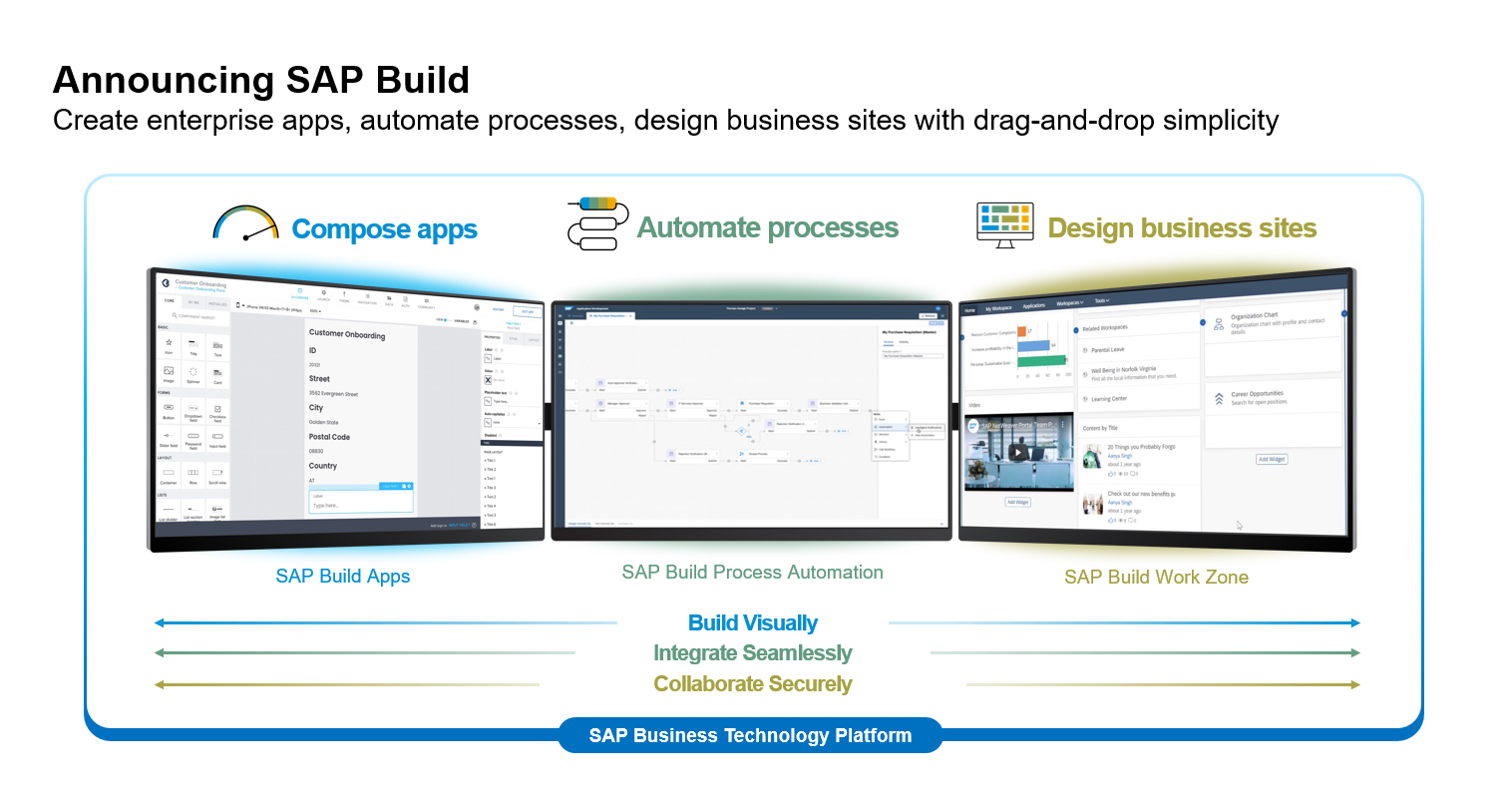At the SAP TechEd 2022 conference, SAP SE today announced it has added a low-code platform, dubbed SAP Build, to its portfolio to make it simpler for organizations to build custom applications.
Sebastian Schrötel, vice president and head of low-code/no-code solutions for SAP, said SAP Build is designed to make the company’s low-code tools more accessible to a wider range of developers, including so-called citizen developers that generally don’t have a lot of programming expertise.
The goal is to make it possible to monitor, analyze and automate processes by leveraging more than 500 templates available within SAP Build. The goal is to make it possible to not only build applications faster but also deploy them via a single click, said Schrötel.

The company’s approach to building custom applications separates its core applications from code developed by others by running pristine instances of SAP enterprise resource planning (ERP) applications in a separate cloud, known as the SAP digital core. A custom application is then deployed in a separate cloud and accesses SAP data via application programming interface (API). That approach enables SAP to update its ERP environment without worrying about breaking custom extensions.
Of course, not every organization has transitioned to that model, so there are still plenty of instances of SAP software running in on-premises IT environments extended using code written in Java or the proprietary ABAP programming language. Over time, SAP is hoping that custom code will either be retired in favor of a process it has added to its ERP platform or by a more modern instance of that process running with a custom application deployed on a separate SAP cloud platform.
SAP also has partnerships with providers of low-code platforms like Mendix and OutSystems that organizations can employ to build applications, but with the launch of SAP Build, the company is making a more concerted effort to encourage organizations to adopt the low-code platform it developed.
While it’s not clear how eagerly low-code tools are embraced by citizen developers versus professional developers, the one thing that is certain is the pace of application development is accelerating. In many instances, professional developers are embracing low-code platforms as an alternative to procedural code to reduce expanding application development backlogs brought on by digital business transformation initiatives. In other instances, professional developers are employing low-code tools to collaborate more easily with end users as they build and deploy the applications that drive those processes.
Regardless of the motivation, the impact this accelerated rate of application development will have on DevOps teams is profound. Not only do these applications have to be deployed in production environments, but DevOps teams must also secure and maintain a much larger application portfolio. As a result, the need to automate DevOps workflows will become more pronounced than it already is.